Ukraine, Iran Topics In Blinken Trip To Middle East, North Africa
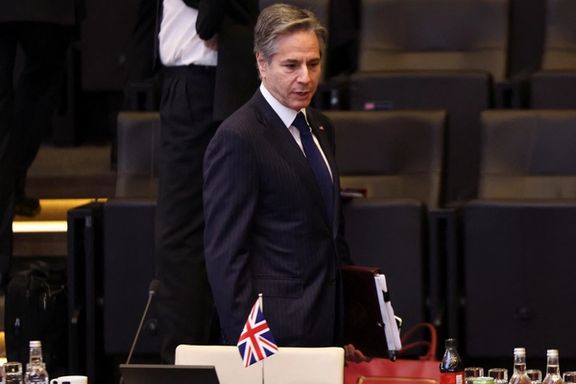
US Secretary of State Antony Blinken will travel to the Middle East and North Africa starting on Saturday in a trip that will be dominated by Russia's invasion of Ukraine and Iran.

US Secretary of State Antony Blinken will travel to the Middle East and North Africa starting on Saturday in a trip that will be dominated by Russia's invasion of Ukraine and Iran.
Blinken is set to visit Israel, the West Bank, Morocco, and Algeria from Saturday to Wednesday, the State Department announced on Thursday, in a trip that will focus on Iran and the conflict in Ukraine.
"Both of those are going to be really at the top of the agenda," top US diplomat for Near Eastern affairs Yael Lempert told reporters.
Lempert said that Blinken will discuss Israel's role as mediator between Russia and Ukraine during his visit over the weekend.
"We appreciate Israel's role," Lempert said. Israeli Prime Minister Naftali Bennett has been trying to mediate an end to the Ukraine-Russia conflict.
She warned that the conflict will only continue to increase the price of basic staples in the Middle East and North Africa region as wheat prices rise.
Lempert said that while in Morocco, Blinken will also meet with Abu Dhabi Crown Prince Sheikh Mohammed bin Zayed Al Nahyan, during which the two will discuss a range of issues including Iran, Yemen, Syria, global energy markets and Ethiopia.
The Abraham accords, a U.S.-sponsored drive to improve relations between Israel and a range of Arab countries, will also be on the agenda, Lempert said.
"It's an opportune moment for this meeting. There's a lot to discuss," she said.
Report by Reuters
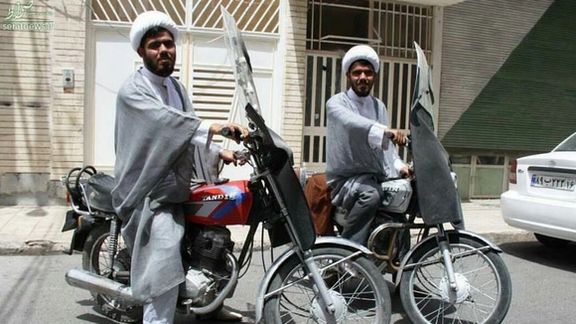
This article is the third in a series about Iran’s Shiite clerics, explaining how they study, get a clerical rank, get married and what they do for a living.
----------------------------------------------------------------------------------------------------------------------------
As Iranian cleric Seyyed Ahmad Batha'i has observed, "Generally speaking, there are two types of clerics in Iran: Those who are good speakers, and those who are not, regardless of the level of their knowledge."
A good cleric should have a good voice, be a good storyteller and be capable of grabbing and keeping the attention of audiences. They should also know a little about classical Persian music, dastgahs, so that they could sing the dramatic bits of religious stories. Some clerics do it very well. Some don't.
Former President Hassan Rouhani was definitely a bad singer according to his friends and foes. Every Muharram, he used to eulogize and sing during the cabinet meetings to pay tribute to the martyrs of Karbala including Imam Hussain. But as most Iranians have seen on state TV, his singing was awful. Grand Ayatollah Hossein-Ali Montazeri reminisced in his memoires that former President Akbar Hashemi Rafsanjani was not a good singer either and while his eulogy was meant to make the listeners cry, it made them laugh. "I had to beg him to stop singing," says Montazeri.
Any good cleric knows that singing and eulogizing are the peak points of the religious performance art. Although being a cleric is not totally about singing or speaking, these are essential tools of the trade. In Qom, many clerics prefer riding motorcycles rather than driving or walking. They usually sing while riding. A motorcycle travels fast and puts a distance between them and people who like to tease clerics. And the people in Qom are really good in the art of teasing.

The traffic department in Qom in the 1980s exempted cleric motorcyclists from putting on a helmet, arguing that a turban was enough to protect the clerics' head in case of an accident.
Mehdi Parnian, a cleric born in 1975, who has studied at the Qom Seminary and later continued his academic studies for an MA degree in communication, is now the head of the seminary's "Humor Office." Parnian has collected the forms of address and titles of Iranian clerics in a brief lexicon.
Sheikh or Shaykh as the word is pronounced in Iran, was a title and form of address in the old times for respectable elderly clerics and tribal leaders. However, in modern Persian, shaykh is the lowest rank for a cleric. These are the ones who may have even not been to a seminary. Some people call them Ashaykh, meaning Mr. Shaykh.
Seyyed, which was previously used for clerics who were the descendants of the holy prophet, is currently being used equally for all the descendant of the prophet even if they are not clerics.
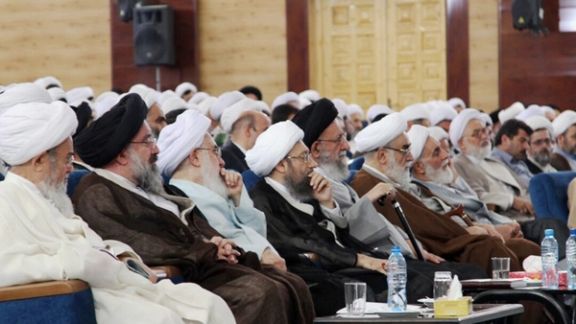
Mullah or molla, in the past meant a literate person. Later it was used for clerics. According to Parnian, nowadays, it is a word with a lot of negative connotations just one step short of a swear word. Among the traditional intellectuals, it means a well-educated person.
Akhund, literally means cleric and is the most popular Persian word that describes a cleric. In the old times, an Akhund was someone who ran a religious school or madrassah.
Seqat ul-Eslam literally means someone who is trusted by Islam. It was a highly respectful form of address in the past. In the modern world, the term has lost its true meaning. Any cleric may be called a seqat ul-Eslam regardless of his real rank.
Talabeh, is a student of divinity or religious knowledge. Although it is a plural world it is used for a single cleric, the new plural is Tollab. These are newly coined words. They did not exist in old Persian. They come from the same root as Taliban, or students of religion.
Hojjat ul-Eslam, means the reason and a guide for Islam. It was not a popular word in the past but when it was used, it was for prominent clerics, short of an Ayatollah. Nowadays, any cleric, even at the lowest level can use the title.
Hojjat ul-Eslam val Muslemin, is the same as Hojjat ul-Eslam and means a reason and a guide for Islam and Muslims.
Ayatollah, is the sign of God. The term became popular after the 13the century. These are high-ranking clerics who can make religious and Sharia interpretations by referring to the Koran or the stories about the holy prophet and the Imams.
Ayatollah ul-Uzma, is a big sign of God or a grand ayatollah. This is a new term that was used first in 1961 for Grand Ayatollah Boroujedri.
Allamah, or as it is pronounced in modern Persian Allameh, means a highly educated multi-disciplinary scholar. This title is used very rarely and is not part of the official titles used in the seminaries.
Despite all the labels and ranks, today's Iranian clerics are divided into two broad groups: A minority who are senior state or religious officials and the rest who make a living as clerics, or maybe have some regular job like a teacher or a low-ranking bureaucrat.

Iran’s foreign minister has traveled to Lebanon to discuss developments in the Middle East region and bolster relations with senior Lebanese authorities.
Hossein Amir-Abdollahian said that while “mixed messages” had been received from Riyadh, Iran expected “the Saudis will act in the interest of the region.” There has been recent speculation that Saudi Arabia may restore diplomatic relations with Lebanon, broken off in October.
Saudi-Iran tensions have often played out in Lebanon, which has a substantial population of both Sunni and Shia Muslims. Earlier this month Iran suspended bilateral talks after Saudi Arabia beheaded 81 men, including seven Yemenis and a Syrian, for “heinous crimes.” Forty-one were Saudi Shiites, Human Rights Watch reported, apparently sentenced over protests.
On arrival at the airport, Amir-Abdollahian told reporters he had met Lebanese Prime Minister Najib Mikati on the side-lines of the 58th Munich Security Conference a month ago, and expressed “Iran's readiness to establish two 1,000-megawatt power stations in Lebanon and to fully develop trade and economic cooperation...”
Lebanon suffers from chronic power shortage, one consequence of a financial crisis that erupted in late 2020, plunging 80 percent of the population into poverty, following the failure of post-war governments to control a spiraling debt financed by Lebanese banks.
Amir-Abdollahian is due to meet President Michel Aoun, Parliament Speaker Nabih Berri, Prime Minister Najib Mikati, and Foreign Minister Abdallah Bou Habib. The foreign minister called consultations with Lebanon, where officials hail from a range of sects, “regular and constructive.”
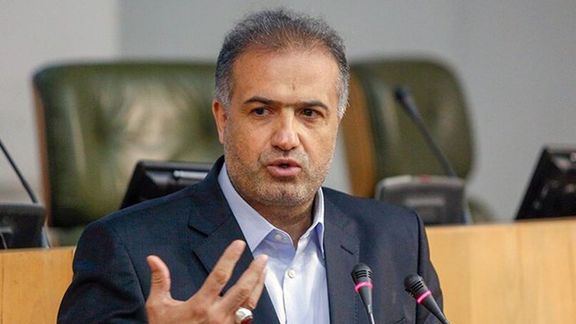
Iran’s envoy to Russia has said the two countries are in talks over the possible recognition of the Russian payment system MIR, according to Iranian media.
The reports that quoted Ambassador Kazem Jalali as making the announcement have not provided further details.
MIR is a payment system for electronic fund transfers that was established by the Central Bank of Russia in 2017 following the imposition of international sanctions on the country starting in 2014.
MIR does not itself issue cards, extend credit or set rates and fees for consumers. Instead, it provides financial institutions with MIR-branded payment products that they can use to offer services to their customers. The system is currently operational in Russia, Armenia, Turkey, and the United Arab Emirates.
The Central Bank of Russia has also developed a domestic financial-communications platform, the System for Transfer of Financial Messages (SPFS), as an alternative to the global Society for Worldwide Interbank Financial Telecommunication (SWIFT) network.
Following Russia’s invasion of Ukraine, several major Russian banks have been cut from the SWIFT system.
According to Iran's Fars News Agency, more than half of Russians are said to have at least one bank card using MIR and over 25 percent of their financial transactions are done through the system.
Iran and Russia are both under US economic sanctions that are causing major problems for their banking sectors. It is not clear if adopting Russia’s MIR and SPFS platforms could help Iran become less dependent on the international banking system.
Tehran is also keen to sign a long-term cooperation agreement with Moscow. During a visit to Moscow in January, Iranian President Ebrahim Raisi presented the draft of a 20-year cooperation deal to his Russian counterpart, Vladimir Putin, that would update a 2001 version.
Tehran claims it is not taking anyone's side in the four-week war between Russia and Ukraine and has called for a peaceful settlement. However, Iran’s state media and hardliner outlets carefully avoid describing Russia’s military offensive in Ukraine as an “invasion.”
In a commentary on Thursday, the official news agency IRNA said that Iran “is against both the expansion of NATO and interferences of the West in the relations between the two neighbors.”
“It also does not consider war to be a solution for problems that exist between countries and urges all sides to refrain from violence. On the other hand, Iran believes that the Western countries' insistence on using sanctions as a tool [against Russia] is unconstructive and will cause further problems,” the agency said.
“Iran's emphasis on dialogue between the sides can resolve the existing issues and prevent problems in the future," according to IRNA.
Iranian officials, including Raisi and Supreme Leader Ali Khamenei, have consistently supported Russia's invasion of Ukraine, blaming the United States and NATO for provoking Moscow.
Khamenei has also claimed that Ukrainians were not resisting strongly to the Russian invasion "because they did not agree with [their] government." The hardline Kayhan newspaper made a similar allegation this week, referring to Ukraine’s “scarecrow” defense, while international media and experts are impressed with the strong Ukrainian resistance.
In February, Iran was among 35 countries that abstained on a UN General Assembly resolution deploring Russia’s action in Ukraine and calling for an immediate withdrawal of its forces from the country.
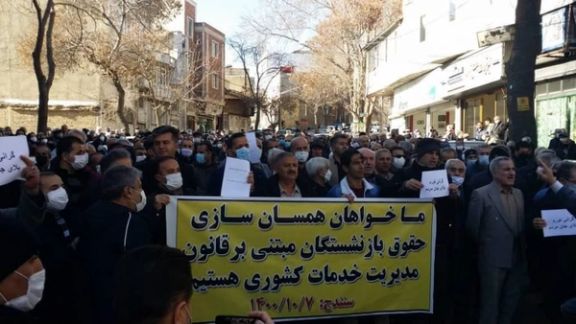
Prices in Iran have risen five to ten-fold since 2018, impoverishing tens of millions and widening income gaps, the head of construction workers' union says.
Cumulative inflation in the construction industry has been 700 percent, while wages for workers has maybe doubled, Akbar Shokat the national chairman of construction workers unions told the Iranian Labour News Agency (ILNA) this week.
Shokat said while each square meter of building construction cost 10 million rials three years ago, now it costs 70-80 million. The same applies to food workers have to buy. One kilo of red meat cost 250 rials in 2018 while now the price has reached 1.6 million rials.
The examples mentioned by the union leader clearly show the impact of ‘maximum pressure’ sanctions imposed by the United States after former President Donald Trump withdrew from the Iran nuclear accord in May 2018. It also shows that inflationary pressures picked up as time passed, averaging above 40 percent in 2021.
While with US sanctions Iran’s currency nosedived in 2018, it took months for annual inflation to increase to above 30 and then 40 percent. The currency, rial dropped from 33,000 to the dollar to the current low of 260,000, or almost eightfold.
The claim about people with capital getting richer is based on the reality that business owners raise prices as the value of Iranian currency falls and maintain a higher margin of incomes than wage earners whose salaries change once a year by a government decision on minimum wage. Salary increases are always far less than inflation.
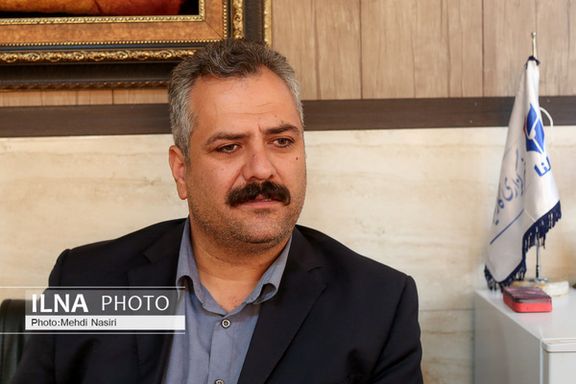
With the most recent minimum wage hike, an average worker will take home around $200 a month, while labor groups say the minimum needed for a family of 3.3 persons is $450 a month.
People owning real estate, profitable businesses or foreign currencies are by-and-large immune from the perils of a falling currency and inflation, because the value of their capital remains mostly intact. For example, real estate prices calculated in US dollars, have stayed the same since 2018, while salaries have dropped.
Jalal Mirzaee, a former member of parliament, told ILNA on Thursday that without the removal of US sanctions the economy cannot improve, especially that President Ebrahim Raisi in many cases has appointed top managers who are not experts in their fields.
Raisi, for example, has appointed former Revolutionary Guard commander Mohsen Rezaei as one of his top economic aides, but he has never managed a large bureaucracy or a private sector company.
“The root cause of many economic difficulties is US sanctions,” Mirzaee said, but added that this does not mean successive governments have not mismanaged the economy, which is largely state-owned and run by the government. If sanctions are lifted, it would be easier to address Iran’s economic problems, but that would depend on effective management by the government, Mirzaee said, which is doubtful in the current administration.
Hossein Raghfar, a respected economist, told Etemed Online this week that the country’s foreign currency revenues have been mishandled and the rial has fallen so much that economic stability is questionable. The result is capital flight, with most investors shifting their businesses to neighboring countries.
Raghfar criticized the established economic order, saying that the Islamic Republic has created an “oligarchy that benefits most from foreign currency revenues” gained by exporting crude oil and other national resources. He argued that in the first instance, political insiders and the military should exit the business world and allow a real private sector to emerge. Raghfar said, “If there is no private sector, the economy cannot move forward.”

Iran’s traffic police chief has criticized manufacturers for importing car parts from China, saying there is no effective quality control.
Brigadier General Kamal Hadianfar told Hamshahri Online in an interview Wednesday there were no cars with all components built domestically.
“Why do they import parts from China? Who monitors the quality of these Chinese parts?” he asked. Hadianfar said car manufacturers could learn from the self-sufficiency of the defense industry in making “largest ballistic missiles in the region”.
President Ebrahim Raisi said in October that Iran’s military and nuclear sectors had responded to United States with “great achievements” due to motivation and effort. But, Raisi argued “we have not invested the technology of the missile industries in the automotive industry.”
China has been the world’s largest car maker since 2008, with its output since 2009 higher than US, European Union, and Japan combined. China accounts for 29 percent of world car exports with Saudi Arabia its leading market, and two Chinese electric car manufactures listed on the Nasdaq. But quality of Chinese cars is considered poor, with focus on low prices and high production numbers.
Echoing those in Iran who blame low-quality vehicles for road casualties, Hadianfar criticized January domestic automakers for producing "carriages of death."
A deputy of Iran’s traffic police, Sivash Mohebbi, said Thursday that 322 people had died in the previous week.